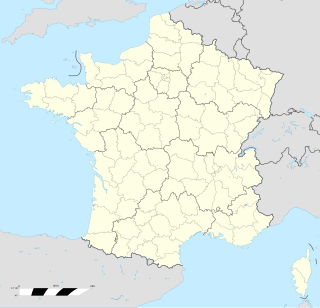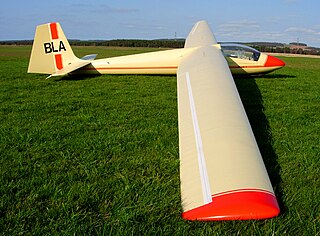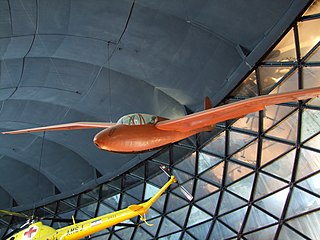| Br 904 Nymphale | |
|---|---|
 | |
| Role | Two-seat sailplane |
| National origin | France |
| Manufacturer | Société des Ateliers d'Aviation Louis Breguet (Breguet Aviation) |
| Designer | Georges Ricard, Raymond Jarlaud |
| First flight | 26 May 1956 |
| Produced | 1956-9 |
| Number built | 18 |
| Developed from | Breguet Br 901 Mouette |
The Breguet Br 104 Nymphale (English: Nymph ) is a two-seat training and competition sailplane, built in France in the 1950s. A direct development of the successful Breguet Br 901 Mouette, it competed at two World Gliding Championships but has mostly been used, in small numbers, by gliding clubs.

In biology, a nymph is the immature form of some invertebrates, particularly insects, which undergoes gradual metamorphosis (hemimetabolism) before reaching its adult stage. Unlike a typical larva, a nymph's overall form already resembles that of the adult, except for a lack of wings. In addition, while a nymph moults it never enters a pupal stage. Instead, the final moult results in an adult insect. Nymphs undergo multiple stages of development called instars.

A trainer is a class of aircraft designed specifically to facilitate flight training of pilots and aircrews. The use of a dedicated trainer aircraft with additional safety features—such as tandem flight controls, forgiving flight characteristics and a simplified cockpit arrangement—allows pilots-in-training to safely advance their real-time piloting, navigation and warfighting skills without the danger of overextending their abilities alone in a fully featured aircraft.

France, officially the French Republic, is a country whose territory consists of metropolitan France in Western Europe and several overseas regions and territories. The metropolitan area of France extends from the Mediterranean Sea to the English Channel and the North Sea, and from the Rhine to the Atlantic Ocean. It is bordered by Belgium, Luxembourg and Germany to the northeast, Switzerland and Italy to the east, and Andorra and Spain to the south. The overseas territories include French Guiana in South America and several islands in the Atlantic, Pacific and Indian oceans. The country's 18 integral regions span a combined area of 643,801 square kilometres (248,573 sq mi) and a total population of 67.3 million. France, a sovereign state, is a unitary semi-presidential republic with its capital in Paris, the country's largest city and main cultural and commercial centre. Other major urban areas include Lyon, Marseille, Toulouse, Bordeaux, Lille and Nice.


















